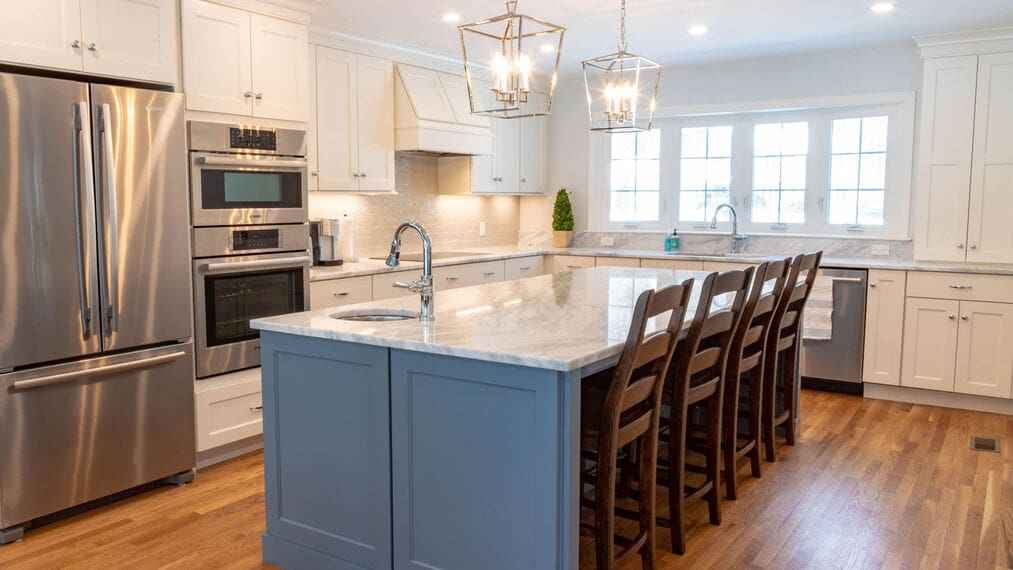
Exploring the Art of Interior Painting in Massachusetts
Table of Contents
In Massachusetts, a region rich with historical architecture and distinctive styles, interior painting can be a celebration of local culture and personal expression. Every brush stroke tells a story, from the colonial heritage seen in the pastel hues of Cape Cod homes to the contemporary flair of Boston’s townhouses. With a diverse palette, your interior space can be a canvas reflecting the unique blend of tradition and modernity that Massachusetts embodies. Yet, interior painting Massachusetts isn’t just about mirroring the cultural milieu—it’s about channeling your taste and lifestyle.
Your home should resonate with who you are. The possibilities are endless, from the calming blues of a seaside retreat to the earthy tones of a rustic farmhouse or the vibrant colors of a bohemian loft. With thoughtful planning and execution, your home’s interior can be transformed into a space that not only pleases the eye but also nurtures the soul.
Understanding the Impact of Interior Painting
Interior painting plays a profound role in defining your home’s aesthetic and emotional appeal. It can add warmth to a cold room, calm a chaotic area, and even influence your mood. From the vibrancy of a lively kitchen to the serenity of a cozy bedroom, every hue has its tale to tell. When exploring tips for interior painting, it’s essential to understand the psychological impact colors can bring to your space.
Creating a Welcoming Atmosphere
In the journey of interior painting, curating a welcoming atmosphere goes beyond aesthetics—it’s about invoking emotions and establishing a certain vibe. The interplay between colors, textures, and light is pivotal.
A welcoming atmosphere is a sensory experience. It’s about orchestrating a symphony of visual elements that create a harmonious environment. A welcoming home isn’t just visually appealing—it resonates with warmth, comfort, and personality. Your chosen paint colors, for instance, should complement your furniture and accessories and enhance natural light, creating an illusion of space and openness. Similarly, the texture of your paint can add depth and interest, contributing to a layered and thoughtfully designed space. Creating a welcoming atmosphere relies heavily on your ability to balance these elements effectively.
With some foresight and planning, your interior painting project can elevate your living space to new aesthetic heights.
Harnessing the Power of Colors
Choosing the right color palette is the key to crafting a welcoming ambiance. Warm colors like reds, oranges, and yellows create a cozy and lively atmosphere, while cool tones like blues and greens bring tranquility and calm. Light colors can make a room feel spacious, while dark tones lend an air of sophistication and depth.
Preparing for Interior Painting
Interior painting isn’t just about selecting colors and detailed preparation. This often underappreciated step sets the stage for your paint job’s success. If you want your paint job to stand the test of time, committing to thorough prep work is essential.
Start with surface cleaning, which involves removing dust, grime, and old paint flakes from your walls. Clean surfaces not only ensure better adhesion of paint but also help in achieving a smoother finish. You might be tempted to skip this step, but a little effort here can mean the difference between a paint job that sparkles and one that dulls over time.
Next, make necessary repairs to your walls. Fill in cracks, holes, or dents with a quality filler or putty. Don’t forget to smooth out these repairs with sandpaper for an even surface. Any imperfections left unchecked will only become more noticeable after painting, detracting from the final look.
Lastly, don’t underestimate the power of priming. A coat of primer serves multiple purposes—it covers stains, provides a uniform base for your paint, and enhances its durability. It also improves the vibrancy of your color, ensuring you get the exact shade you picked out.
Surface Preparation Techniques
Embracing the best painting techniques for walls begins with flawless surface preparation. Remove loose paint, patch up holes, and sand rough areas to achieve a smooth canvas. Priming is equally crucial as it improves paint adhesion, blocks stains, and enhances the durability of the topcoat.
Choosing the Right Paint and Finishes
Once you’ve adequately prepped your surfaces, it’s time to select the right paint and finishes. Flat and eggshell finishes are ideal for low-traffic areas, while satin and semi-gloss are perfect for high-traffic zones due to their easy-to-clean nature. Remember, the right paint can transform a dull room into a captivating space.
Mastering Interior Painting Techniques

Whether you’re a seasoned DIY enthusiast or planning to hire a professional interior house painter, mastering some basic painting techniques can elevate your project. These include cutting-in, which is painting the corners and edges first before the larger surfaces, using a roller for larger areas, and always painting in a ‘W’ pattern for an even finish.
Time-Saving Strategies
Interior painting can be time-consuming, especially if you’re working on a large project. Using an extension pole for hard-to-reach areas, investing in a quality paintbrush, and utilizing a paint grid instead of a tray can save you precious time and effort.
Remember, if the project becomes overwhelming, seeking help from a professional interior house painter might be the best decision. They possess the knowledge, skills, and tools to deliver a high-quality paint job that meets and often surpasses expectations.
Summing Up the Art of Interior Painting
Interior painting is a dynamic, creative, and rewarding process that breathes new life into your home. It’s a blend of aesthetic sensibility, technical knowledge, and meticulous execution. Each step, from preparation to the final brushstroke, contributes to the transformation of your living space.
With the right approach, even the most mundane room can become a canvas for personal expression. It’s not merely about filling walls with colors but curating a space that reflects your personality, harmonizes with your lifestyle, and complements the architectural beauty of your home. It’s about creating a welcoming sanctuary where every corner tells a story.
The journey might seem daunting at first, especially with the myriad of colors, finishes, and techniques to choose from. However, with the right tips for interior painting and the best painting techniques for walls at your disposal, it can turn into an exhilarating creative endeavor.
You can visit Interior Painting in Massachusetts for more jaw-dropping ideas and inspiration. Whether you decide to embark on this journey yourself or enlist the help of a professional interior house painter, remember the ultimate goal is to create a space that feels like home to you.
Conclusion
Interior painting is a powerful and cost-effective way to elevate your property’s value and appeal. Professional Painters in Rhode Island suggest that by selecting the right colors, incorporating accent walls, and ensuring a professional finish, you can transform your home into a stylish and inviting space. Professional Painters in Connecticut emphasize that this strategic investment not only enhances your living experience but also attracts potential buyers, boosting your property’s marketability. Professional Painters in Massachusetts highlight that for the best results, consider hiring professional painters like Prep Smart Painting to achieve a flawless and impactful transformation that maximizes your home’s potential.





